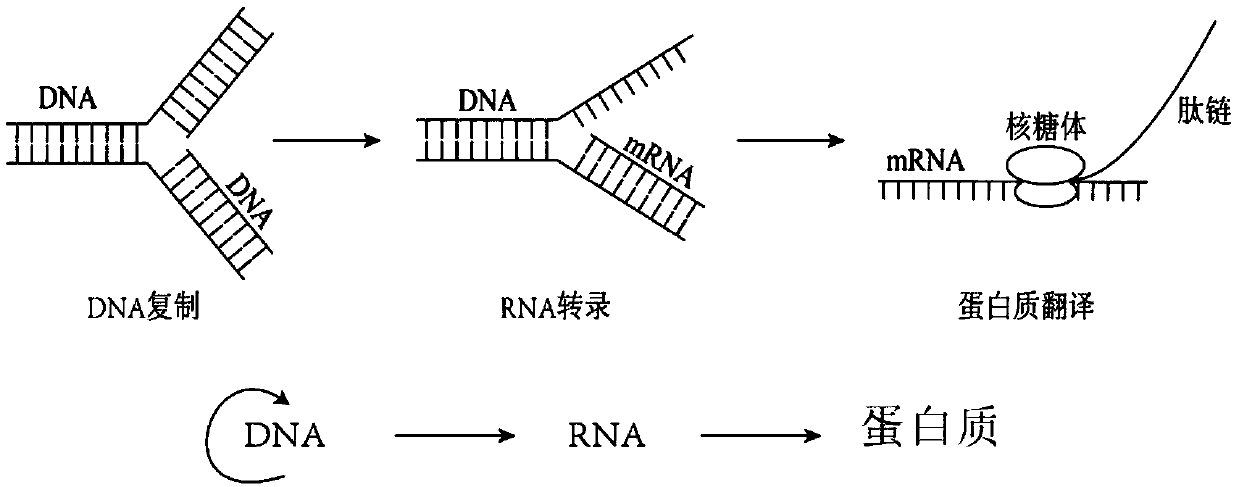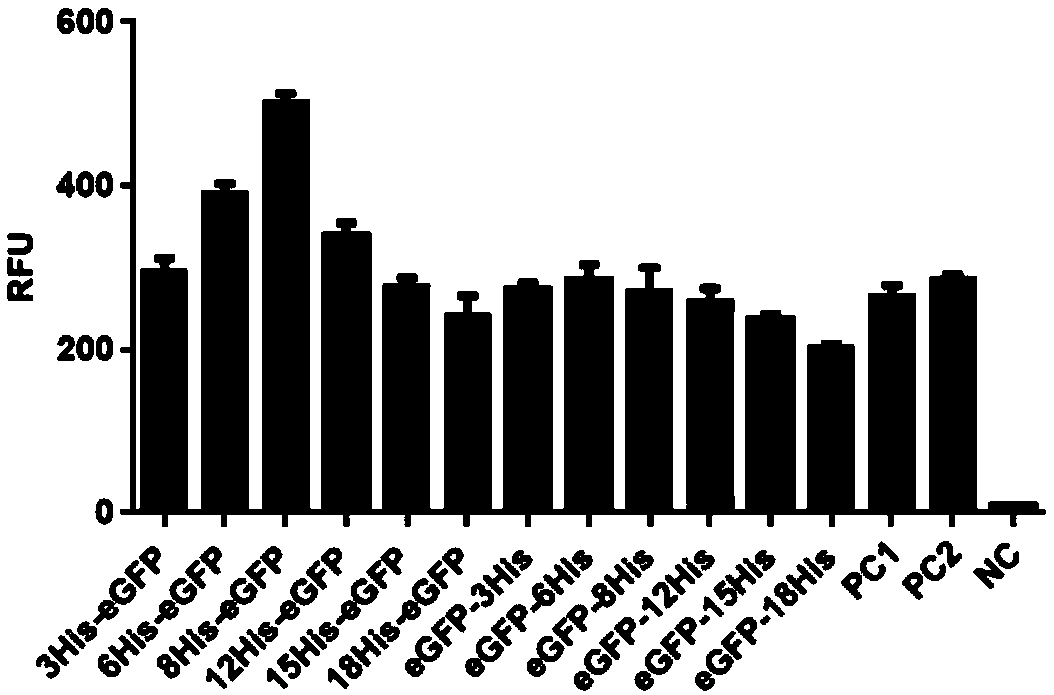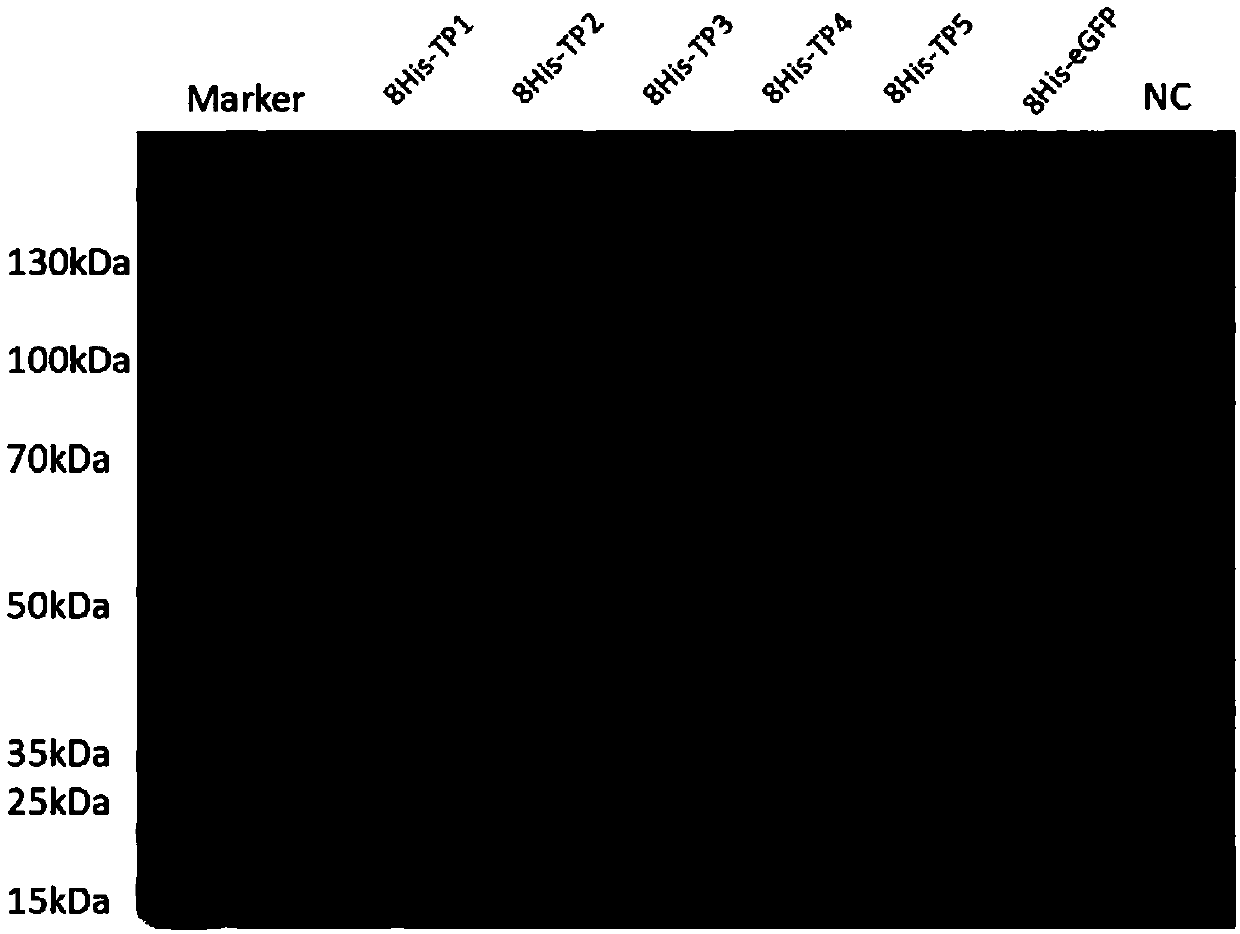Multiple His sequence tag and application of multiple His sequence tag to protein expression and purification
A sequence and polynucleotide technology, which is applied to the polyrecombinant amino acid sequence tag and its application in protein expression and purification, can solve problems such as affecting the translation efficiency of target protein
- Summary
- Abstract
- Description
- Claims
- Application Information
AI Technical Summary
Problems solved by technology
Method used
Image
Examples
preparation example Construction
[0121] In the present invention, the preparation method of the yeast cell extract is not limited, and a preferred preparation method includes the following steps:
[0122] (i) providing yeast cells;
[0123] (ii) washing the yeast cells to obtain washed yeast cells;
[0124] (iii) subjecting the washed yeast cells to destructive treatment to obtain crude yeast extract;
[0125] (iv) performing solid-liquid separation on the crude yeast extract to obtain the liquid part, which is the yeast cell extract.
[0126] In the present invention, the solid-liquid separation method is not particularly limited, and a preferred method is centrifugation.
[0127] In a preferred embodiment, said centrifugation is performed in a liquid state.
[0128] In the present invention, the centrifugation conditions are not particularly limited, and a preferred centrifugation condition is 5000-100000 g, preferably 8000-30000 g.
[0129] In the present invention, the centrifugation time is not parti...
Embodiment 1
[0183] Example 1 Eukaryotic cell nHis amino acid sequence length and base determination
[0184] 1.1 Determination of the length of the nHis amino acid sequence: Use the same histidine codon CAC to design sequences with histidine numbers of 3, 6, 8, 12, 15, 18, 20, and 24, and at the same time, in order to reduce the number of nHis sequences The GC content reduces the annealing temperature of the sequence, improves the success rate of plasmid construction, and modifies some bases (CAC becomes CAT) by staggered substitution of synonymous codons. The specific sequence information is reflected in Table 1.
[0185] Table 1 Related Nucleic Acid Sequences
[0186]
Embodiment 2
[0187] Embodiment 2: the construction of the in vitro protein synthesis system plasmid containing nHis nucleic acid sequence
[0188] Plasmid construction: For the designed 8 nHis nucleic acid sequences, use 1 pair of primers containing nHis and Linker sequences, and insert them into the N-terminal and C-terminal of the target protein (eGFP), respectively. In the final constructed plasmid, 8 nHis+Linker The nucleic acid sequence is inserted between the AUG start codon and eGFP of the pD2P-eGFP plasmid, and the 8 Linker+nHis nucleic acid sequences are inserted between the eGFP and the stop codon of the pD2P-eGFP plasmid. The names of the plasmids are: pD2P-nHis_eGFP and pD2P-eGFP_nHis, respectively.
[0189] The specific construction process is as follows:
[0190] For the plasmid construction of pD2P-nHis_eGFP and pD2P-eGFP_nHis, use 1 pair of primers to carry out PCR amplification respectively, and take 10 µL of amplification products to mix; add 0.5 µL of Dpn I to 10 µL of ...
PUM
 Login to View More
Login to View More Abstract
Description
Claims
Application Information
 Login to View More
Login to View More - R&D
- Intellectual Property
- Life Sciences
- Materials
- Tech Scout
- Unparalleled Data Quality
- Higher Quality Content
- 60% Fewer Hallucinations
Browse by: Latest US Patents, China's latest patents, Technical Efficacy Thesaurus, Application Domain, Technology Topic, Popular Technical Reports.
© 2025 PatSnap. All rights reserved.Legal|Privacy policy|Modern Slavery Act Transparency Statement|Sitemap|About US| Contact US: help@patsnap.com



